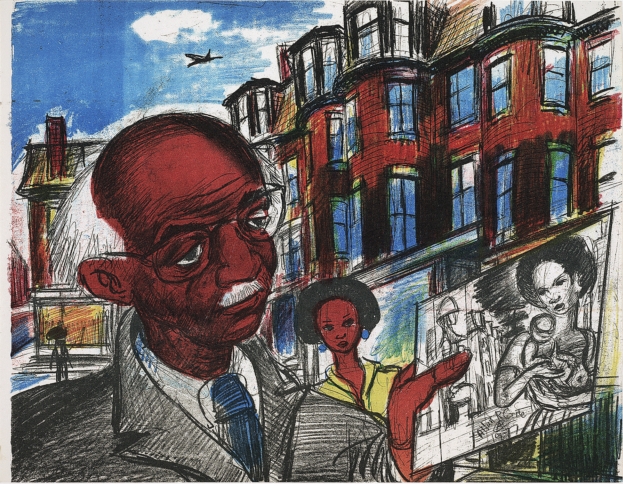
Allan Rohan Crite documented the evolving lives of Roxbury and the South End based Black Bostonians nearly a century ago.
Now, his art and life are being honored throughout the city through the Friends of Crite Park’s efforts to renovate the Allan Rohan Crite Square into the new Crite Park.
Exhibitions of his work will open October 23 at the Isabella Stewart Gardner Museum and at the Boston Athenaeum.
"I
am a storyteller of the drama of man,” Crite said in a 1998 interview
with the Harvard Extension School Alumni Bulletin. “This is my small
contribution. To tell the African American experience in a local sense,
of the neighborhood, and in a larger sense, of its part in the total
human experience."
Crite,
who was born in New Jersey in 1910, moved to Boston as a child and
studied at Boston University, the Massachusetts School of Art, the
Boston Museum of Fine Arts School, and Harvard University. While
pursuing his own work, he spent time working as a Works Projects
Administration artist and as an illustrator for the Boston Naval
Shipyards.
He spent
his life working with a variety of mediums from watercolor to
lithography to oil, depicting the effects of urban renewal or “removal”
of Black Bostonians during the twentieth century. Thus, providing
continually relevant social and political commentary on the Black
experience within the city and the Roxbury and the South End
neighborhoods.
Crite
identified himself as an “artist-reporter”. His early work depicted his
fellow residents in Roxbury performing daily tasks such as taking the
subway, going to school and spending time within the community.
At the time, he lived on Dilworth Street.
While
his work in the 1930’s widely focused on taking record of daily events
through his “neighborhood paintings” series, he began to concentrate on
religion in the late 1930’s and 1940’s. He overlaid Christian
iconography with Boston city life and would depict iconic religious
figures as Black.
To
celebrate this work and its effect on Black artists, alongside the
upcoming art exhibits, the Crite Park is holding a block party on
October 19.
According
to Cheryl Dickinson from the Friends of Crite Park, the park is not
currently open because the last phase of the project to plant trees,
install art, put up a fence and shade will not occur until next year.
There is a tentative plan to cut the ribbon on the park after its
completion. However, the park wanted to celebrate Crite’s vision of
community alongside the museums.
“One
thing that's really important for the community is that we are in one
of the most diverse parts of Boston,” Dickinson said. “We want people to
get to know one another.”
The
nine year long, volunteer project included cleaning up trash and the
creation of an “outdoor living room space” to reflect the community’s
desire for a usable space. The park is located on Columbus Avenue, a few
doors down from where Crite lived until his death in 2007.